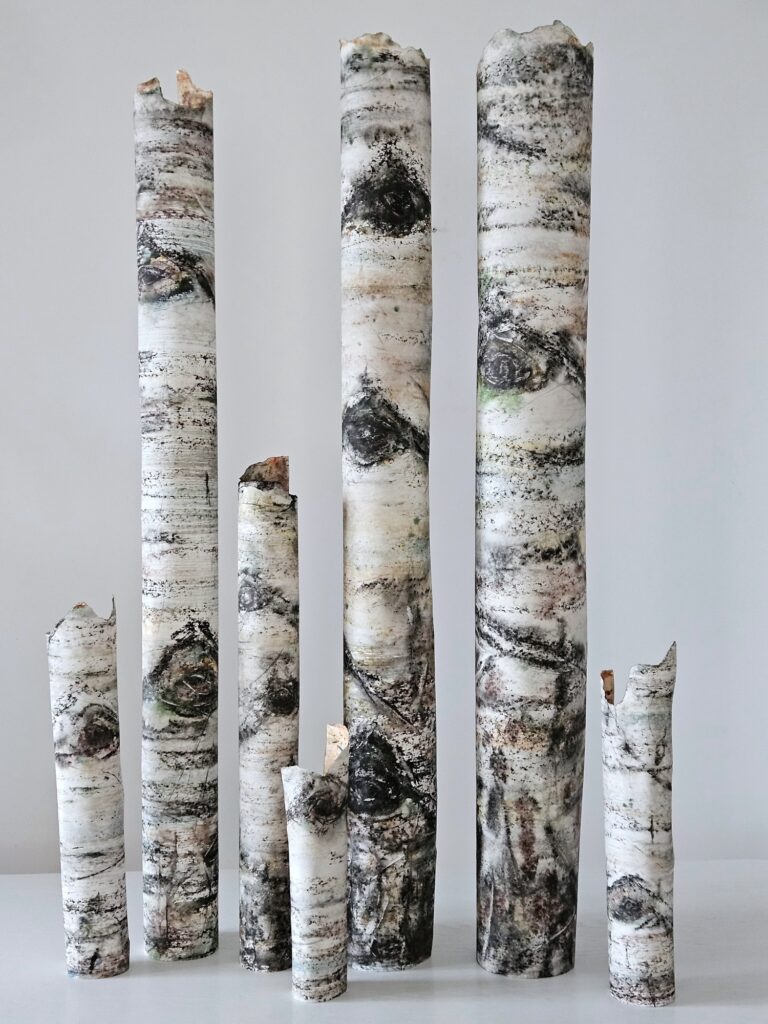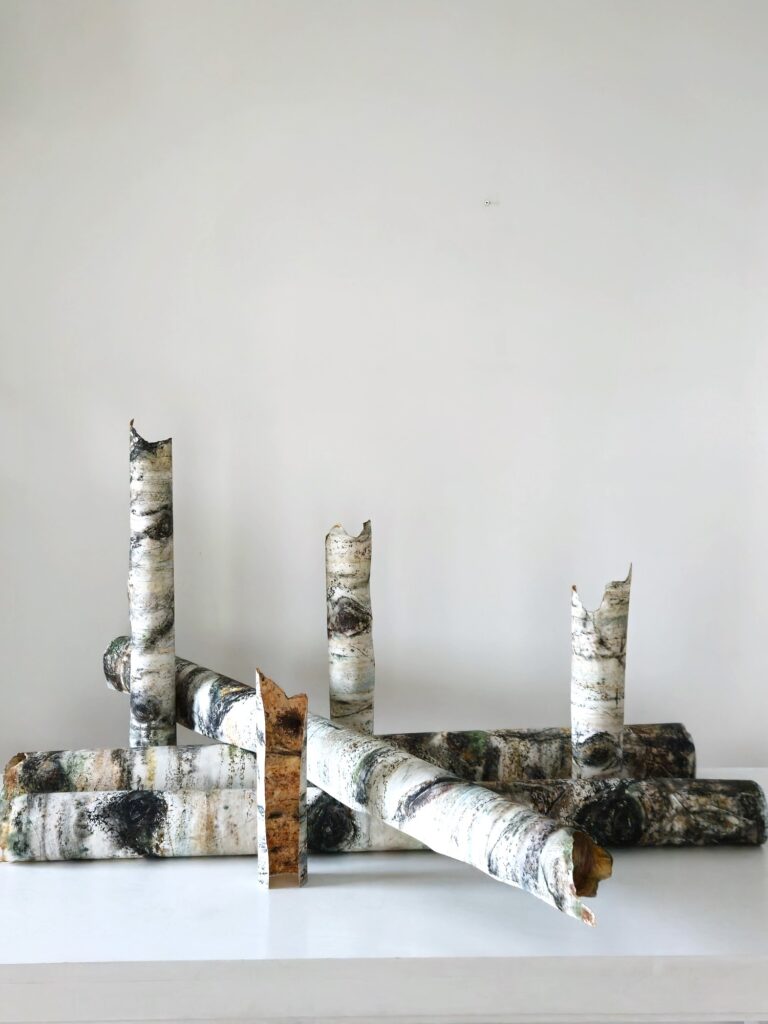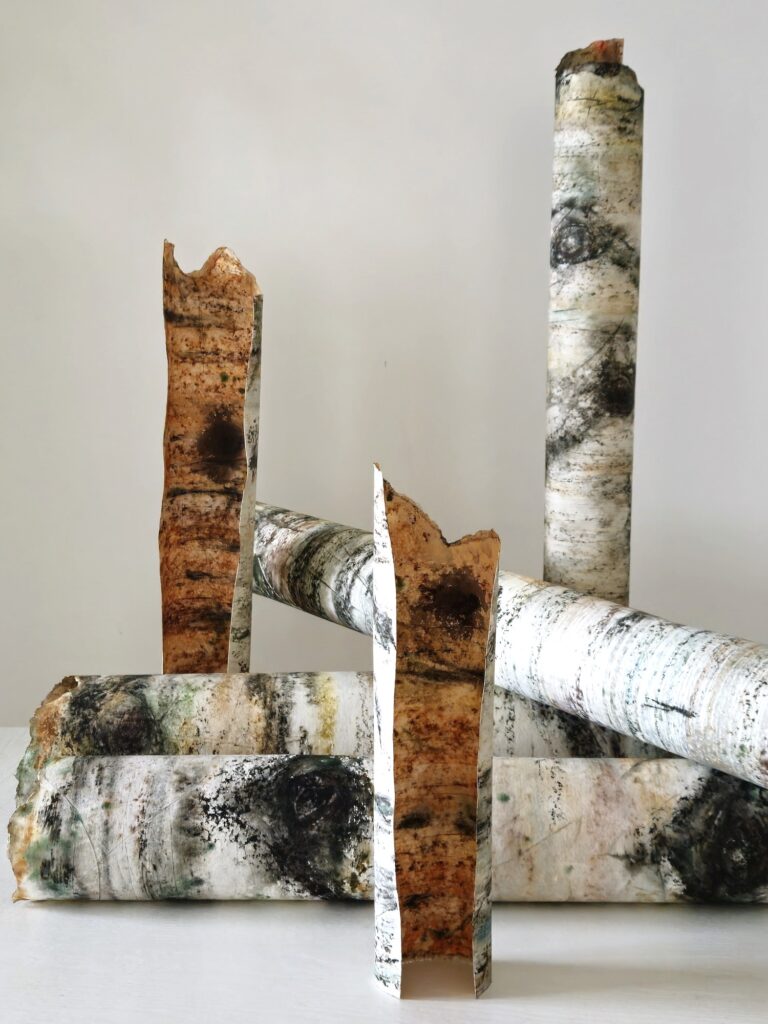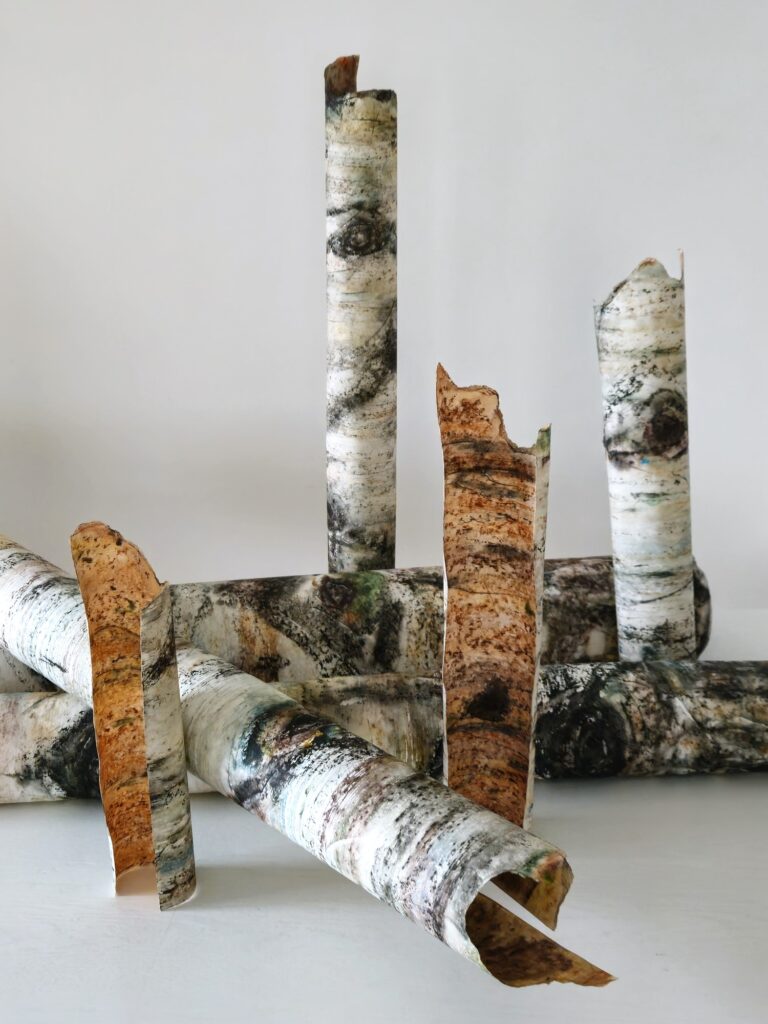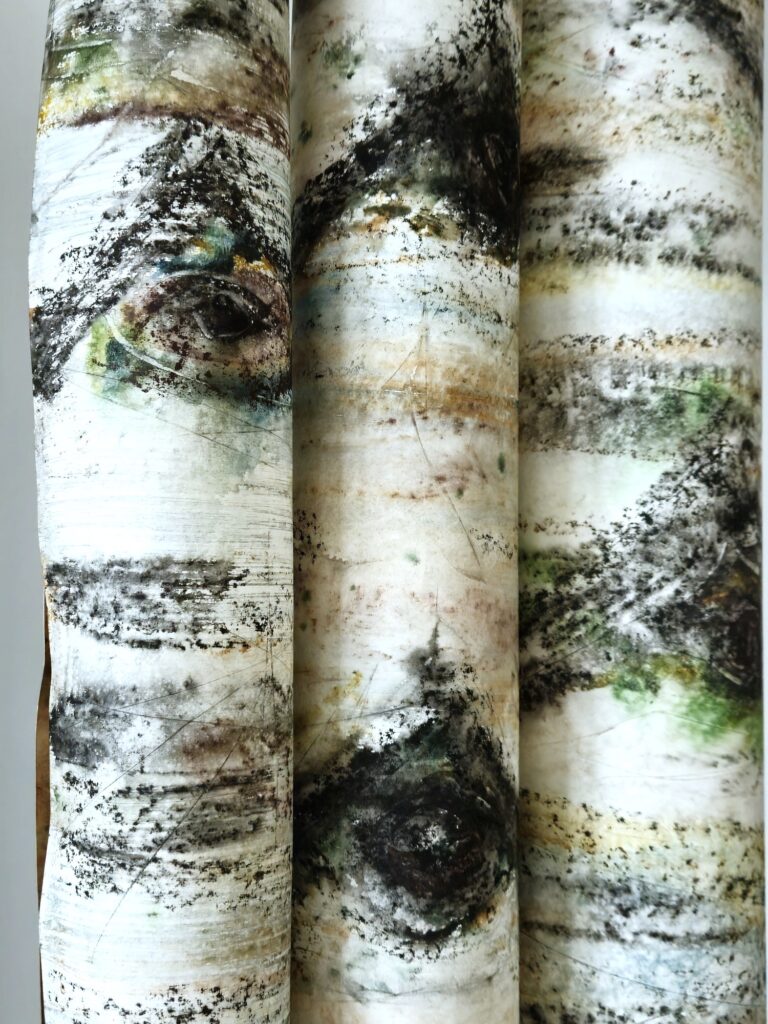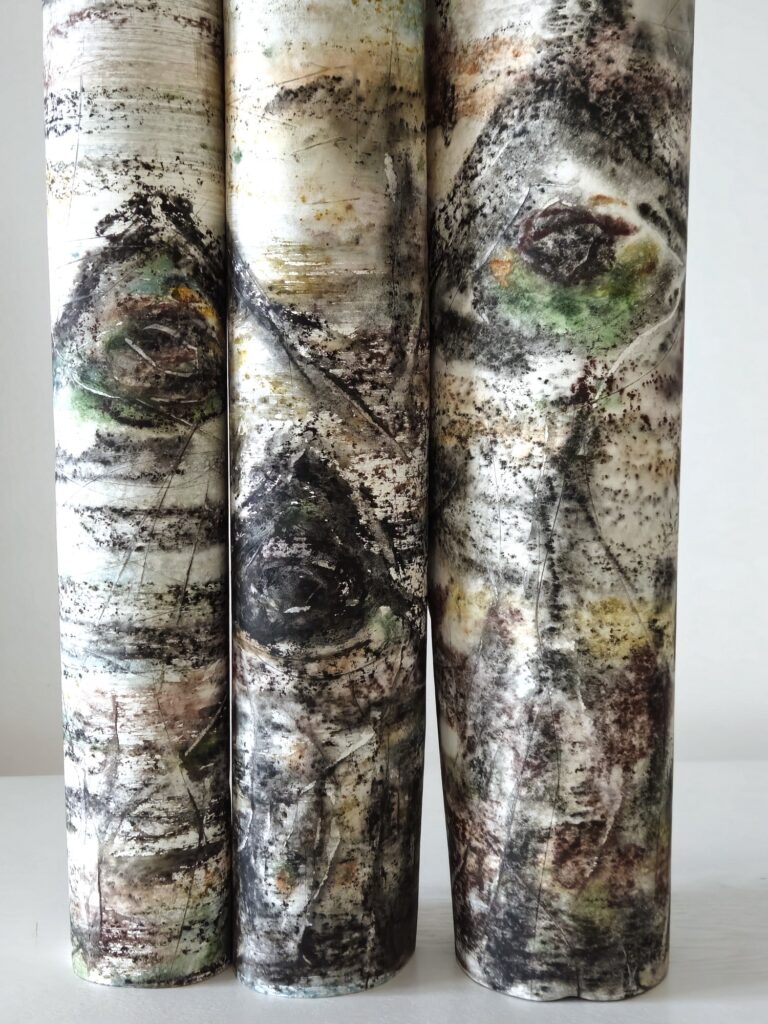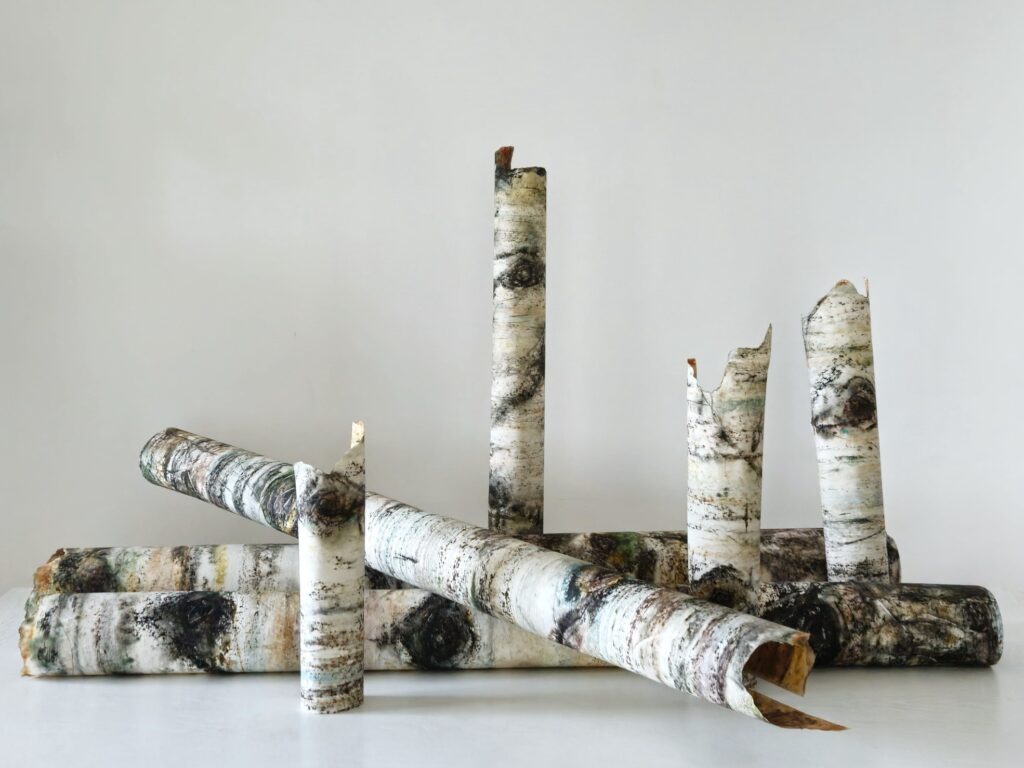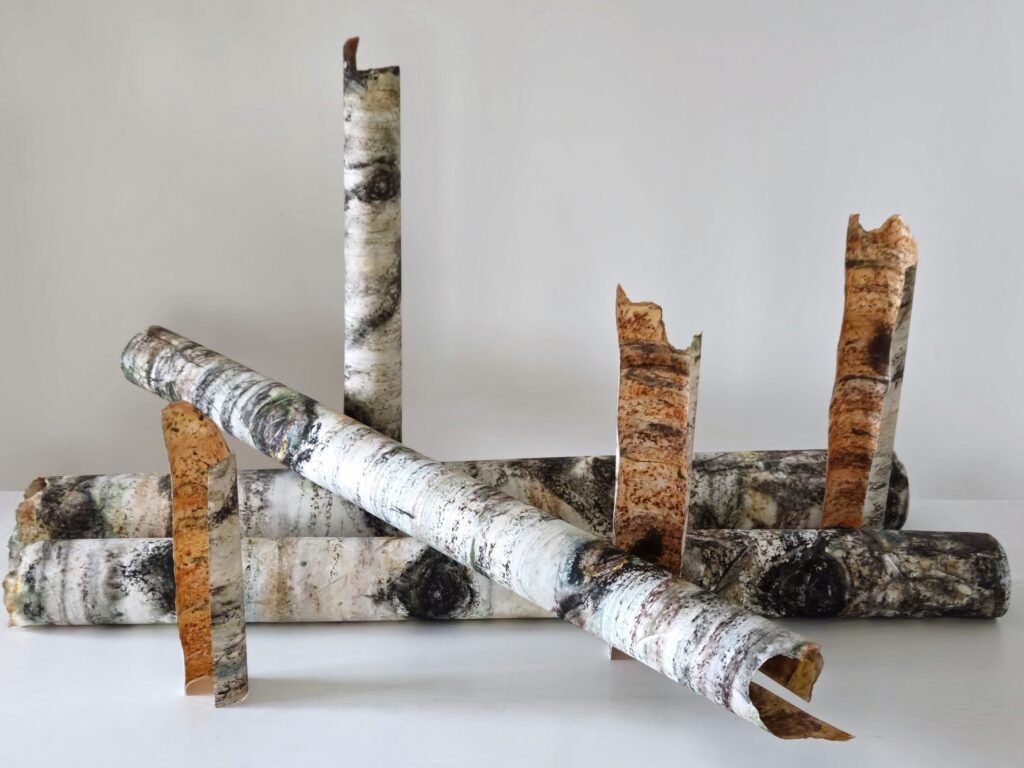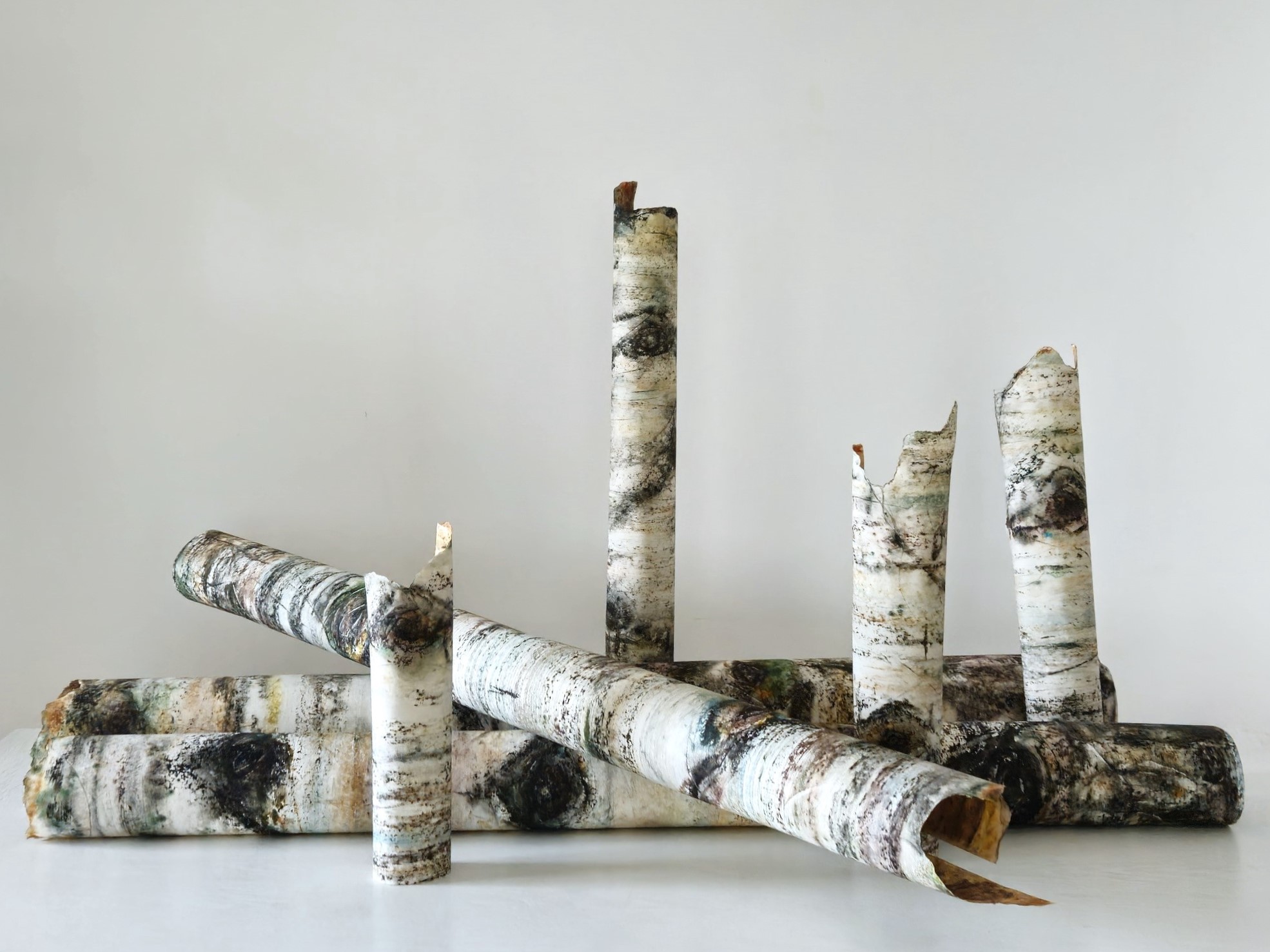The Forest, or what’s left of it…
The new series of paintings brings to attention the fate of the forest, the way we relate to nature (…) This aspect is becoming extremely relevant today; it is important that in the future we can admire the Forest, the majesty of a tree, and not just a memory of something we have lost…
Of all the trees, birches are my favorites. I’ve always been fascinated by birch forests, with their slender white trunks and golden autumn foliage that stands out beautifully against the blue sky.
I can say that I love birches not only for their aesthetic charm, but also from a geobotanical point of view. More precisely, some plants can be used as geochemical markers (bioindicators) for certain minerals or chemical elements in the soil — a discipline known as geobotany or biogeochemistry. These plants accumulate unusually large amounts of specific elements in their tissues, reflecting the chemical composition of the geological substrate.
Birches also have a lesser-known property: under certain conditions, they can be considered weak to moderate geochemical indicators of gold (Au).
The birch tree has a deep root system and a metabolism that allows it to absorb traces of metals from the soil and transport them to its leaves and bark. Studies conducted in Siberia, Scandinavia, Australia and Romania have shown that near gold deposits, microparticles of gold can be absorbed from soil solutions and deposited in its tissues. The leaves and bark of Betula pendula (silver birch) can contain elevated concentrations of gold — on the order of tens of ppb (parts per billion).
However, the birch does not directly indicate the deposit (as some hyperaccumulators of Ni or Cu do), but it can signal gold anomalies through chemical analysis of its leaves and bark.
So, when you see birches in nature or even in city parks, I recommend simply admiring their beauty. A moment of contemplation can be truly precious — there’s no need to dig for gold!
I painted this watercolor series inspired by birch trunks and fragments of bark.
Technical details:
Watercolor and liquid charcoal on Hahnemühle FineArt Natural Line ecological bamboo paper, 265 g/m².
Seven double-sided painted sheets, rolled in cylindrical form, dimensions: 45×125 cm, 35×125 cm, 30×125 cm, 25×60 cm, 20×40 cm, 20×47 cm. 2025.
